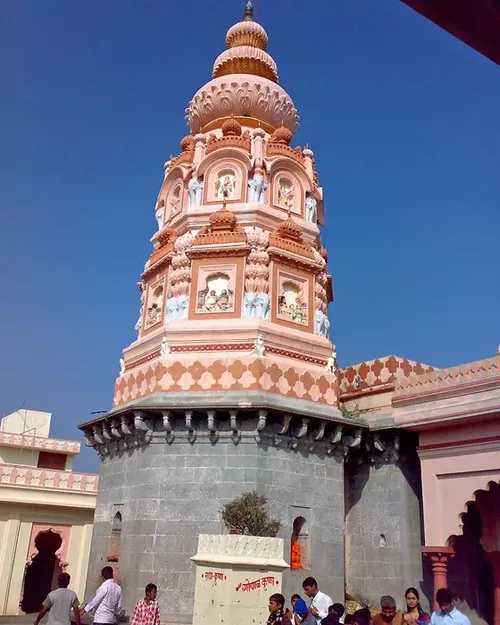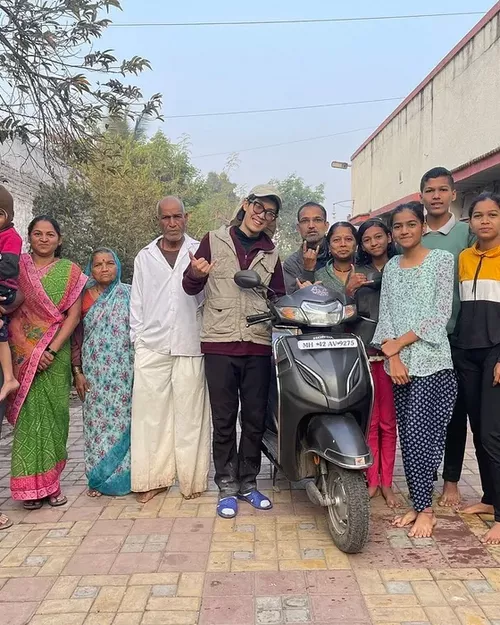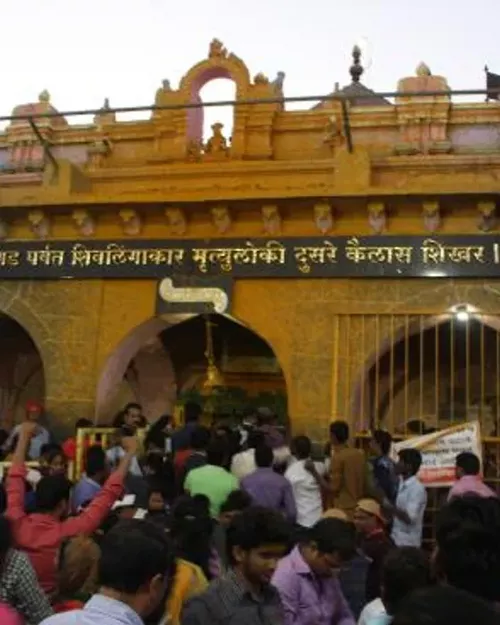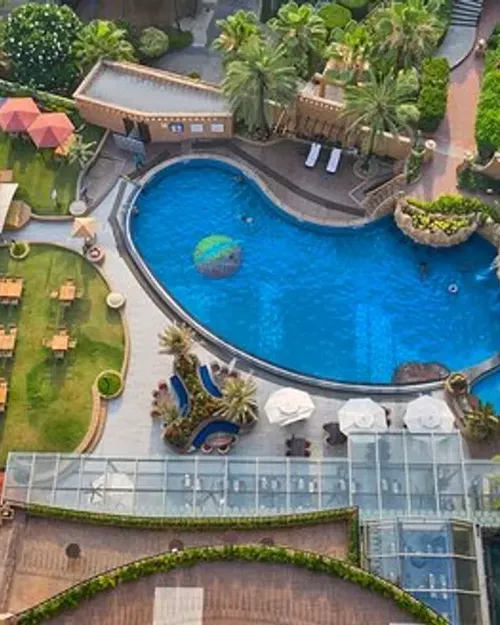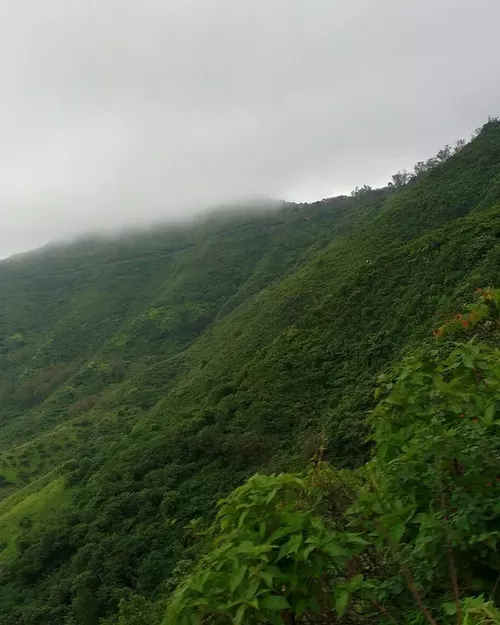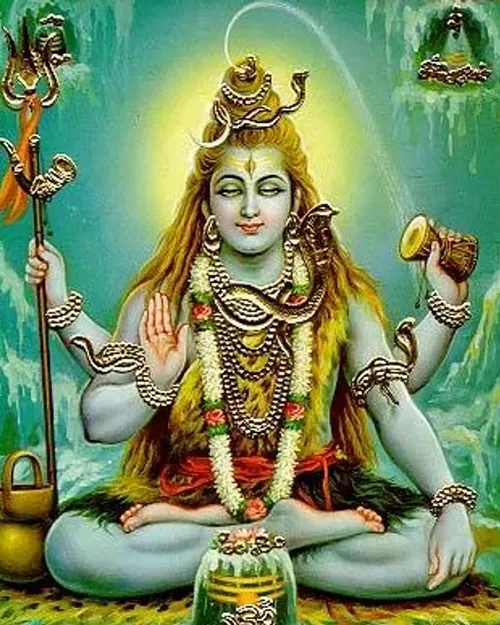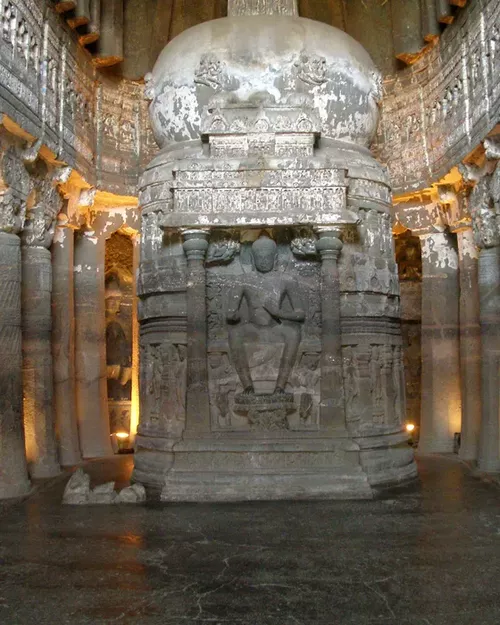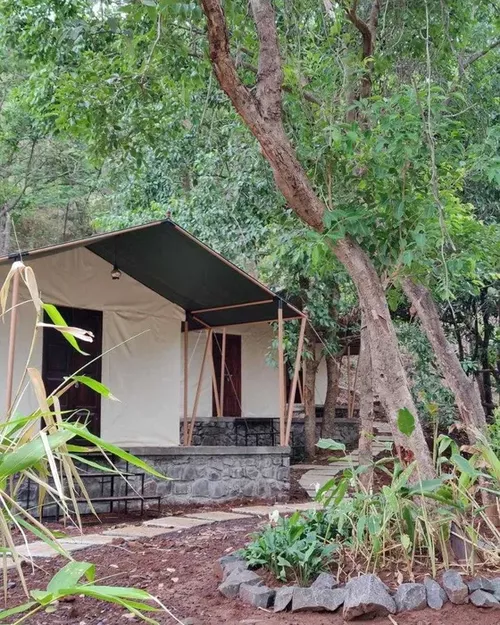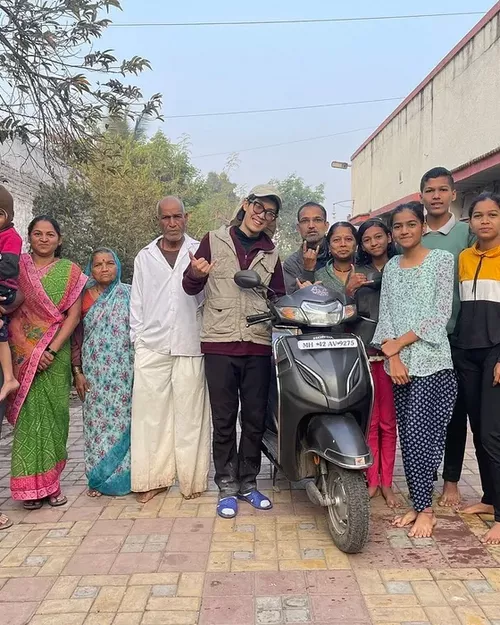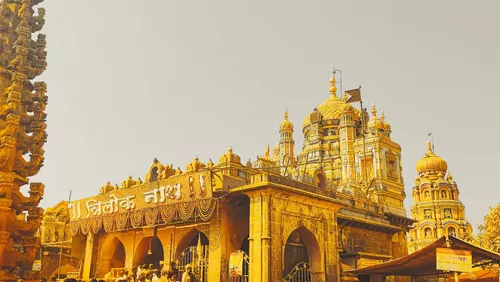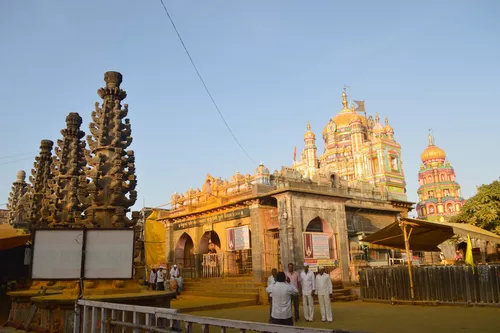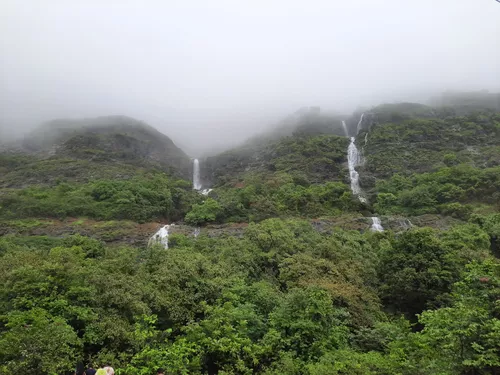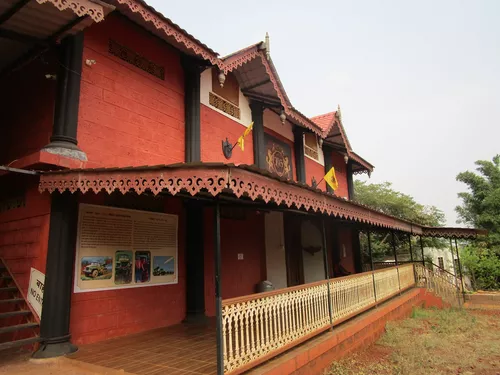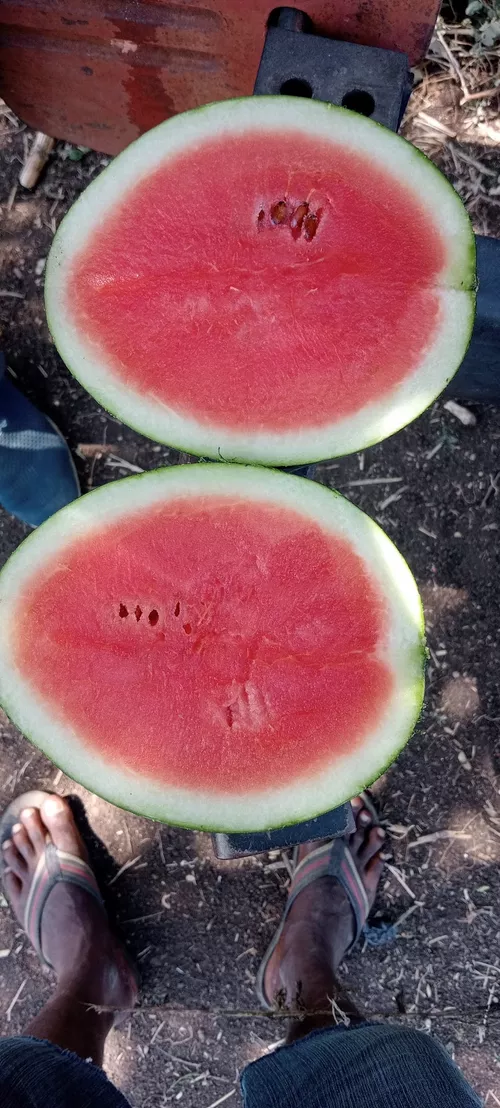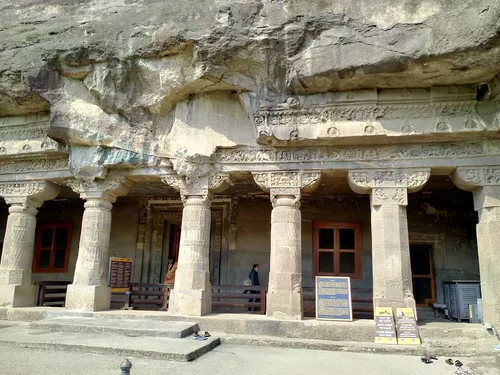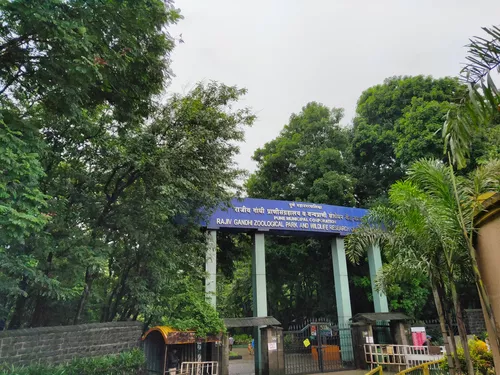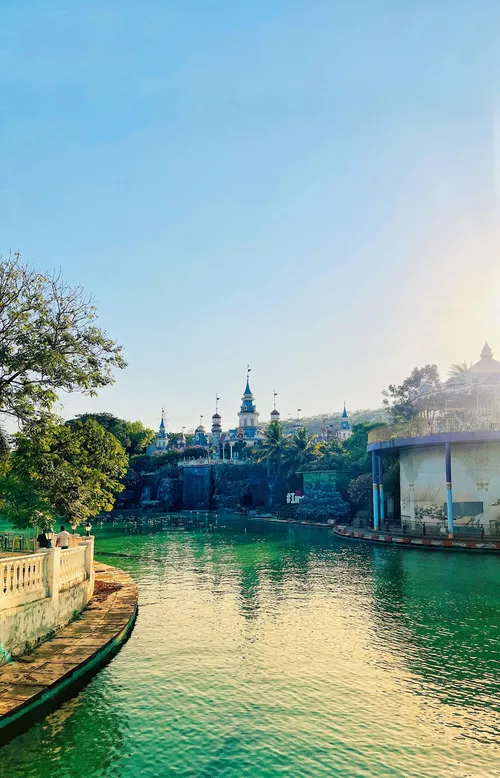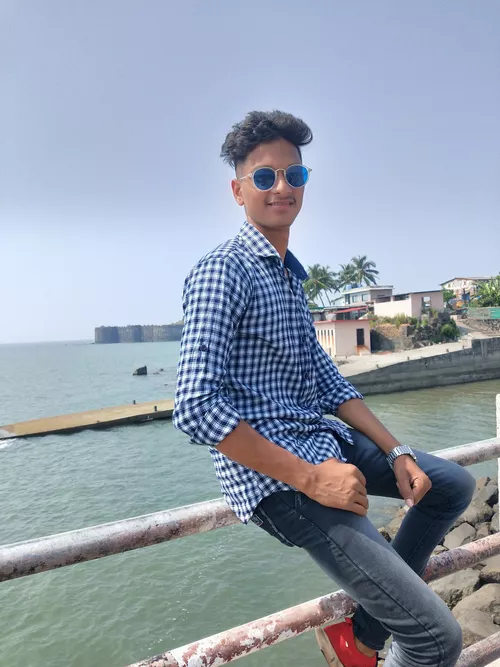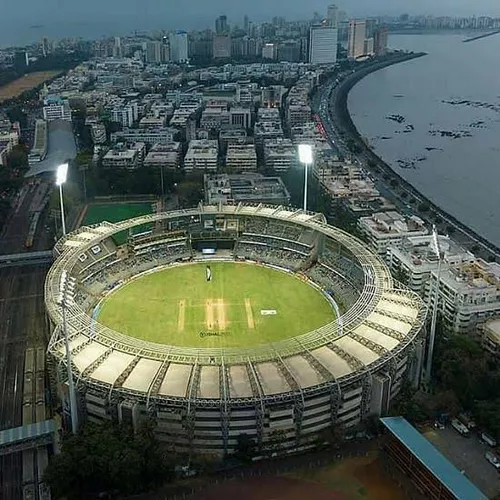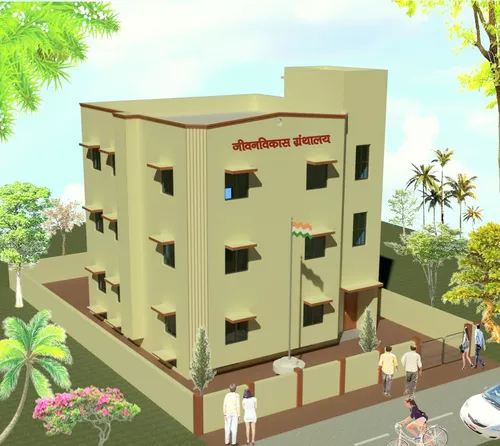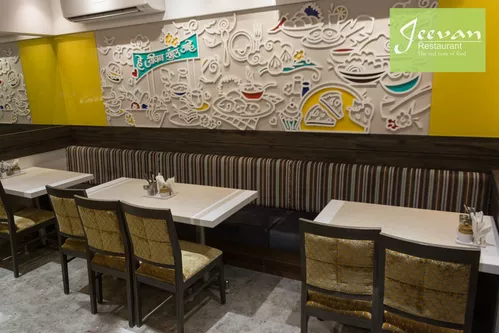Jejuri is popular for
Jejuri in next 3 month
Weather in Jejuri
December in Jejuri is cool and misty with moderate air quality, making it a pleasant time to visit.
Usual trip duration
A short trip to Jejuri allows you to visit the famous Khandoba Temple, explore the vibrant market, and take in the beautiful countryside views. It's a quick getaway to experience the cultural and religious significance of the town.
Affordable destination with low cost options
Ideas To Plan Your Trip
Places To Visit
Places To Eat
Frequently Asked Questions About Jejuri
The best time to visit Jejuri, known for the Khandoba Temple, is during the winter months, from October to February. The weather is pleasant and comfortable, making it ideal for exploring the temple and participating in the religious activities. The temperatures during this period range from 15°C to 30°C, offering a respite from the heat experienced during the summer. Visiting during the Somvati Amavasya, a new moon day falling on a Monday, is considered especially auspicious, though it attracts large crowds. The annual Khandoba Fair, held in December/January, is also a vibrant time to experience the cultural significance of Jejuri. However, be prepared for larger crowds during festival times. Consider visiting during weekdays for a relatively peaceful experience. Avoid the monsoon season (June to September) due to heavy rainfall, which might disrupt travel plans and make it difficult to navigate the temple premises safely.
Reaching Jejuri is relatively straightforward, with several transportation options available.
| Mode of Transport | Details |
|---|---|
| By Air | The nearest airport is Pune International Airport (PNQ), located approximately 50 kilometers away. From the airport, you can hire a taxi or take a bus to reach Jejuri. Several airlines operate regular flights to Pune from major Indian cities. |
| By Train | Jejuri has its own railway station (JEJ), but it's a small station with limited connectivity. A more convenient option is to travel to Pune Railway Station, a major railway hub with frequent trains from various parts of India. From Pune, you can take a local train or a bus to Jejuri. |
| By Road | Jejuri is well-connected by road to nearby cities like Pune, Satara, and Baramati. Maharashtra State Road Transport Corporation (MSRTC) buses operate regularly from Pune and other major cities. Private taxis and cabs are also readily available for hire. The road journey from Pune takes approximately 1.5 to 2 hours. |
When planning your trip, consider your budget and time constraints. While flying to Pune and then taking a taxi to Jejuri might be the fastest option, it's also the most expensive. Traveling by train and bus is a more budget-friendly alternative.
Jejuri is primarily famous for the Khandoba Temple, dedicated to Lord Khandoba, also known as Martand Bhairav. However, there are a few other places of interest in and around the town:
- Khandoba Temple: This is the main draw, situated on a hill. The temple is known for its unique rituals, including the throwing of turmeric powder (bhandara) and the devotees' enthusiastic participation in the religious ceremonies. Climb the steps to the temple for panoramic views of the surrounding landscape.
- New Khandoba Temple: Located at the base of the hill. This temple is more accessible to elderly or differently abled devotees.
- Kadepathar: A cliff located near Jejuri, offering scenic views. It's a popular spot for photography and enjoying the natural beauty.
- Local Markets: Experience the local culture by visiting the bustling markets in Jejuri. You can find religious items, souvenirs, and local snacks.
While Jejuri is primarily a religious destination, the surrounding natural beauty and local culture offer a glimpse into the rich heritage of Maharashtra.
While the Khandoba Temple is the central focus of Jejuri, there are a few other activities you can enjoy to enhance your visit:
- Participate in Temple Rituals: Observe and, if you feel comfortable, participate in the unique rituals performed at the Khandoba Temple. The throwing of turmeric powder (bhandara) is a significant part of the experience.
- Explore Local Markets: Wander through the local markets to experience the vibrant culture of Jejuri. You can find religious items, souvenirs, local snacks and traditional clothing.
- Photography: Capture the scenic beauty of the surrounding landscape. The views from the temple and Kadepathar are particularly picturesque.
- Enjoy Local Cuisine: Sample the local Maharashtrian cuisine at nearby restaurants and eateries. Try traditional dishes like vada pav, misal pav, and puran poli.
- Visit Nearby Attractions: If you have time, consider visiting other attractions in the surrounding area, such as the Bhuleshwar Temple or the Purandar Fort.
Remember to dress respectfully when visiting the temple and be mindful of the local customs and traditions.
Yes, it's important to be aware of and respect the local customs and traditions when visiting Jejuri, particularly the Khandoba Temple. Here are some key points to keep in mind:
- Dress Code: Dress modestly and respectfully when visiting the temple. Avoid wearing revealing clothing. Traditional Indian attire is always a good choice.
- Footwear: Remove your shoes before entering the temple premises. There are designated areas for storing footwear.
- Photography: Check with temple authorities regarding photography restrictions. In some areas, photography may be prohibited or require prior permission.
- Turmeric Powder (Bhandara): The throwing of turmeric powder is a significant ritual at the Khandoba Temple. Be prepared to be covered in turmeric, and embrace the experience. It's considered auspicious.
- Respectful Behavior: Maintain a respectful demeanor within the temple premises. Avoid loud talking, disruptive behavior, and any actions that may offend religious sentiments.
- Donations: Donations are accepted at the temple. If you wish to make a donation, do so at the designated donation counters.
- Local Customs: Be mindful of local customs and traditions. Observe how locals behave and try to follow suit.
By being respectful and mindful of the local customs and traditions, you can ensure a positive and enriching experience in Jejuri.
While Jejuri is not a major shopping destination, you can find a few places to buy religious items, souvenirs, and local products:
| Location | What to Buy |
|---|---|
| Near Khandoba Temple | Religious items such as idols of Lord Khandoba, turmeric powder (bhandara), incense sticks, prayer beads, and religious books. |
| Local Markets | Souvenirs, local handicrafts, traditional Maharashtrian clothing, and snacks. |
| Small Shops | Household items, snacks, and other daily necessities. |
If you are looking for more extensive shopping options, you can visit Pune, which offers a wider variety of shops and markets.
While Jejuri is a small town, you can find a few decent restaurants and eateries serving local Maharashtrian cuisine:
- Restaurants near Khandoba Temple: Several small restaurants and dhabas are located near the Khandoba Temple, offering simple and affordable meals. You can find traditional Maharashtrian dishes like vada pav, misal pav, and bhakri.
- Local Eateries: Explore the local markets to find small eateries and snack shops. These places often serve delicious and authentic Maharashtrian snacks and sweets.
- Restaurants on Pune-Jejuri Road: If you are traveling from Pune, you can find several restaurants along the Pune-Jejuri road offering a variety of cuisines, including Maharashtrian, North Indian, and South Indian.
Don't expect fine dining options in Jejuri. The focus is on simple, tasty, and affordable food. Be sure to try local specialties and enjoy the authentic flavors of Maharashtra.
Yes, there are accommodation options available in Jejuri, although they are primarily budget-friendly and basic. Expect simple guesthouses, lodges, and a few small hotels. Here's what you can typically find:
- Guesthouses near the Temple: Several guesthouses are located close to the Khandoba Temple, catering mainly to pilgrims. These offer basic rooms with essential amenities.
- Lodges: You'll find a few lodges providing budget accommodation with basic facilities like beds, attached bathrooms, and sometimes, simple meals.
- Small Hotels: A couple of small hotels offer slightly better amenities compared to guesthouses and lodges, but still fall under the budget category.
For more comfortable and higher-end accommodation, many travelers prefer staying in Pune and making a day trip to Jejuri. Pune offers a wide range of hotels, from budget to luxury, with better facilities and services. It's advisable to book your accommodation in advance, especially during peak season and festival times, as availability can be limited in Jejuri.
Jejuri can serve as a base to explore other interesting locations in the vicinity. Here are a few nearby destinations worth considering:
| Destination | Distance (approx.) | Highlights |
|---|---|---|
| Pune | 50 km | A major city with historical sites, museums, gardens, and shopping centers. |
| Bhuleshwar Temple | 30 km | Ancient Shiva temple known for its unique architecture and scenic location. |
| Purandar Fort | 60 km | Historic fort with panoramic views, important in Maratha history. |
| Shani Shingnapur | 160 km | Village famous for its Shani temple where no houses have doors. |
Consider these options based on your interests and the amount of time you have available.
Yes, Jejuri is generally considered a safe place to visit for tourists and pilgrims. The town is relatively small and peaceful, and the local community is known to be welcoming and helpful.
- Low Crime Rate: Jejuri has a low crime rate, making it a safe place to explore. However, it's always wise to take basic safety precautions, such as being aware of your surroundings and keeping your valuables secure.
- Crowd Management: During peak season and festivals, the Khandoba Temple can get very crowded. Be mindful of your belongings and stay close to your group, especially if you are traveling with children or elderly individuals.
- Road Safety: If you are driving to Jejuri, be cautious on the roads, especially during the monsoon season. Follow traffic rules and drive defensively.
- Food and Water Safety: Choose reputable restaurants and eateries to avoid food poisoning. Drink bottled water or boiled water to stay hydrated.
- Emergency Services: Familiarize yourself with the location of the nearest police station and hospital in case of any emergency.
By taking these simple precautions, you can ensure a safe and enjoyable visit to Jejuri.
Turmeric powder, locally known as 'bhandara', holds immense significance in Jejuri, particularly at the Khandoba Temple. It is an integral part of the rituals and a symbol of devotion to Lord Khandoba. Here's a breakdown of its significance:
- Auspicious Symbol: Turmeric is considered highly auspicious in Hinduism. It is believed to possess purifying and protective qualities.
- Symbol of Prosperity: Bhandara is seen as a symbol of prosperity and well-being. Applying it or being covered in it is believed to bring good fortune and blessings.
- Offering to Lord Khandoba: The throwing of turmeric powder is a form of offering to Lord Khandoba. Devotees believe that it pleases the deity and grants their wishes.
- Unique Ritual: The ritual of throwing bhandara is unique to the Khandoba Temple in Jejuri. It creates a vibrant and colorful atmosphere, adding to the spiritual experience.
- Community Bonding: The bhandara ritual involves active participation from devotees, fostering a sense of community and shared devotion.
When visiting Jejuri, be prepared to be covered in turmeric powder. It's not just a ritual; it's a deeply ingrained part of the culture and a symbol of faith. Embrace the experience and participate respectfully in the traditions of the temple.
Yes, Jejuri is particularly known for its vibrant celebration of festivals dedicated to Lord Khandoba. The most significant festival is the Khandoba Fair (also known as the Jejuri Yatra), but other festivals also hold importance:
- Khandoba Fair (Jejuri Yatra): This is the biggest festival in Jejuri, usually held in December or January. It attracts hundreds of thousands of devotees from across Maharashtra and beyond. The fair involves processions, traditional dances, music, and various religious rituals. The atmosphere is incredibly energetic and colorful, with devotees throwing turmeric powder (bhandara) and chanting prayers.
- Somvati Amavasya: This is a new moon day that falls on a Monday, considered highly auspicious for worshiping Lord Khandoba. Devotees throng to the temple on this day to offer prayers and participate in special rituals.
- Champa Shashti: Celebrated in the month of Margashirsha (November-December), this festival commemorates Lord Khandoba's victory over demons. It involves fasting, prayers, and special rituals at the temple.
- Diwali: While Diwali is celebrated throughout India, it also has special significance in Jejuri. The temple is decorated with lights and lamps, and devotees offer prayers to Lord Khandoba.
If you plan to visit Jejuri during a festival, be prepared for large crowds and book your accommodation in advance. The festive atmosphere is a unique and enriching experience, offering a glimpse into the rich cultural heritage of Maharashtra.




